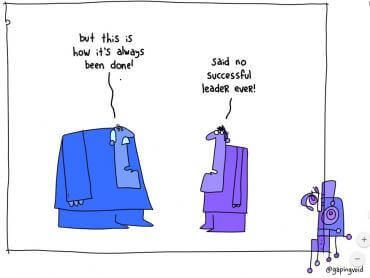Is documenting SOPs and business processes on your “to-do” list? Has this “to-do” languished for weeks, months, or even years?
You are not alone. While documenting company procedures and processes is vital to business growth, there may be other priorities as you put out fires, strategize employee retention, and focus on the many tasks that must be completed to keep your company running smoothly.
It’s normal to run into obstacles while trying to systematize your business. That’s why we thought it high time we talk about the challenges business owners encounter while trying to implement process documentation – and the solutions needed to overcome them.
The Top 3 Challenges in Documenting SOPs and Processes
It’s essential to understand and overcome the challenges associated with documenting SOPs and processes because the success of your organization depends on it!
Yes, it’s that critical!
Clear and concise SOPs and processes help ensure that everyone in the organization is on the same page and working towards the same goals. They also improve efficiency and reduce errors, which can save time and money in the long run.
Challenge #1: Conflicting priorities
The most common challenge business owners experience is that time-sensitive priorities always occur in any company. Emergencies arise, trends pop up, and product launch due dates loom. Most of your focus may be on sales, production, operations, or hiring. There are many moving pieces when running a business, which is why building business systems is vital.
Using established SOPs and processes can provide consistency in your business, allow for automation, and build a strong foundation for growth.
💡Solution: Prioritization and organization
We can definitely suggest a change management approach in approaching this challenge and these steps to work through.
- Determining if the process documentation task is essential. It will never become a priority if you don’t treat it as a priority.
2. Setting aside dedicated organizational time. Block out a time when you and your team will document processes and company procedures. You may need to set up a few hours each day and approach this task as deep work, or you may work with several employees to accomplish the task. However you organize it, set aside time to ensure it gets done.
3. Deciding where you will start. Organizing your entire business can feel incredibly overwhelming. Instead, pick one department to start. Some company owners select the area that is most often in chaos, while others decide the department that, when documented, will bring in the most income. This department might be sales or production, or it could be the employee hiring line. Whatever it is, start there and get the SOPs and processes documented first. Then determine the next area.
4. Assigning tasks to specific individuals and ensure they own their project. The work will only get done if it gets assigned.
5. Tracking your accomplishments. Getting a process documented and ensuring your team tests and implements the system will help that department cut down on emergencies, customer complaints, and inconsistencies. Track when a team begins implementing a new documented system and continue to check in on the metrics. You should see an improvement worth celebrating.
Challenge #2: How to document?
The next most common challenge is a need for more know-how. You were never trained in process documentation, and now you have to document the processes and SOPs of an entire company. That can feel challenging.
You may wonder, do I have to write everything out in extreme detail? You may have even attempted to build processes, only to get lost in the weeds halfway through.
💡Solution: Follow the Whale approach to documentation
Whether you feel as if you aren’t writing enough or don’t know what “enough” is, there is an approach to documentation that will work for you.
If you’re using Whale to document, this is made clear and accessible. However, whether you are using Whale or not, follow these steps:
- Build your overall, high-level boards.
If you aren’t using Whale, this advice translates to focusing on high-level documentation first. This is done by naming each section of the organization, along with the general functions of that department.
- Start with the department that will provide the most significant return on investment if you have well-documented processes and procedures.
- Review the high-level and break it down to the significant process for that area.
For example, the Sales Department will include processes for lead intake, qualifying the lead, presenting the estimate or proposal, presenting the services/products, setting the appointment, doing the first meeting, presenting an estimate or proposal, following up, closing the deal, and the handoff to other parts of the company. That is a high level of the sales process.
- Document the steps for each process.
This step can become overwhelming, but only if you tackle it alone. You already have subject experts in your company, so utilize your team to build the process.
Additionally, while business owners often define “documentation” as “writing it down,” this does not have to be the case. You can record a video walk-through, take screenshots as you go, or ask an employee to photograph each step. You and your team also likely already have checklists or other helpful instructions written out that can be utilized.
This is one way that Whale is so helpful. The platform makes it easy to record a video, upload existing checklists, and more so that you and your team do not have to do double work.
Challenge #3: I tried documenting SOPs and processes - and it didn’t work
It is difficult to push through frustration and past poor experiences, particularly if you aren’t sure why the previous documentation attempt failed. If you are trying to build process documentation again, but are getting frustrated or feel you have fallen into the same negative pattern, there is a solution for you.
💡Solution: Identify what didn't work
If you’ve already tried documenting SOPs and processes – and they didn’t work, the first step is determining what didn’t work and why.
Here are a few common reasons processes don’t work:
- They are difficult to access.
- SOPs are not documented clearly.
- Employees do not participate in creating and revising company procedures.
- Employees are not trained on SOPs and processes.
- Managers and executives constantly override existing processes and procedures.
- No measurables are connected to processes, so your team cannot determine if following them contributes to company success.
- No one is assigned to documenting and updating SOPs and processes.
All of these issues are solvable once you identify them. The main challenge is identifying why an SOP or process isn’t working and then determining how to fix the issue. For example, if employees are not participating in utilizing the systems you’ve documented, talk to them to determine why. It could be that they don’t have access to essential information or have not been given time to train on the material you’ve painstakingly documented. They may have feedback on how a process needs to be changed to fit new software – but there is no avenue for this feedback.
Bottom line?
In conclusion, documenting SOPs and processes is crucial for the success of any organization. Most importantly, yours!
Consider the story of a small manufacturing company that was struggling to keep up with the demands of their customers. They had a hard time meeting delivery deadlines, and quality issues were becoming more frequent. After examining their processes, they realized that they lacked clear and concise SOPs.
They took the time to document their processes and implement best practices for documentation. As a result, their efficiency and productivity improved, and they were able to deliver high-quality products to their customers on time.
By understanding and overcoming the challenges of documenting SOPs and processes, they were able to transform their business and improve on tangible metrics such as operational efficiency and product defects.
Don’t let poor documentation hold your organization back. Take the necessary steps to document your SOPs and processes effectively.
Your organization’s success depends on it.

Readiness to Scale Assessment
Almost everyone wants to scale their business but where to start? Take our Readiness to Scale Assessment to find out! You’ll be presented with 10 statements that correlate to one of three specific scaling stages in business.










